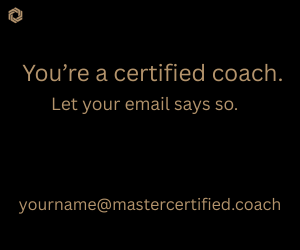There are many resources on public speaking, and there are practical tips on how to become a better speaker. But, how do you become a better listener, and why do you want to be one?
Habit 5 in the book, The Seven Habits of Highly Successful People, by Stephen Covey, states: “Seek first to understand, then to be understood,” or listen first then speak. Covey explains that people often do not listen in a conversation; instead, they rush to talk and give advice or opinion. The reason is that we relate the information we hear to our own experiences, and we do not make a deliberate effort to understand the other side. Nevertheless, active listening and understanding are the keys to effective communication in business and in life. In the book, Co-Active Coaching, Henry and Karen Kimsey-House explain the three levels of listening and how the art of listening can be cultivated.
Level 1
Level 1 listening is an interaction where the primary focus of the listener is on their own thoughts, opinions, judgments and feelings. People relate the words they hear to their experiences or needs. This type of listening is entirely appropriate when we are facing a decision or when we must collect information. If we are buying a car, for example, we will be listening at Level 1 to the salesperson to see how the car features will fit our needs and budget.
Level 2
Level 2 listening takes the communication way ahead. The undivided attention of the listener is entirely on the speaker and on the conversation. This means not only hearing what is being said but also noticing how it is said. It involves paying attention to the tone of voice, body language and facial expressions. This type is the empathic listening concept explained by Covey, including paraphrasing and reflecting on the words of the speaker.
The listener can filter out their internal chatter and any distraction from the environment. As a result, the listener can tune in to the meaning of the words, choose a way to respond, and assess the effect of the response on the speaker. Level 2 listening is a skill that professional coaches use in their communication, but Henry and Karen Kimsey-House take it even further.
Level 3
Level 3 listening brings an entirely new state of awareness to the conversation. It involves doing everything at Level 2, plus using intuition and being open to receiving more information in any form that it presents itself. This means tuning in not only to the conversation but to the environment.
The use of intuition can be misunderstood because it is not based on hard facts. The concept of intuition is, in fact, simple and can be an excellent communication asset. If you get a hunch, for example, while listening to your conversational partner, consider bringing it up but do not be attached to it. Without insisting on being right, observe the effect it has on the speaker and be aware of where the conversation goes next. For instance, you may say: “I understand that you are happy with the results, but I have a feeling that you have something else on your mind.” The response may be, “No, not really,” or “Yes, actually, I wanted to tell you about this issue that came up with our project.” It is irrelevant if you are right or wrong; what is important is the effect on the conversation.
The art of listening takes time to develop, but it can be practiced daily. It is especially useful when negotiating or persuading others. It builds trust and understanding. It is important to note that understanding is not the same as agreement; you may not share the same opinion of the other person, but you come to understand the way they think. One of the benefits of being a good listener is the extra information and time gained to create a helpful and effective response that will further the conversation.
Disclaimer
The views and opinions expressed in guest posts featured on this blog are those of the author and do not necessarily reflect the opinions and views of the International Coach Federation (ICF). The publication of a guest post on the ICF Blog does not equate to an ICF endorsement or guarantee of the products or services provided by the author.
Additionally, for the purpose of full disclosure and as a disclaimer of liability, this content was possibly generated using the assistance of an AI program. Its contents, either in whole or in part, have been reviewed and revised by a human. Nevertheless, the reader/user is responsible for verifying the information presented and should not rely upon this article or post as providing any specific professional advice or counsel. Its contents are provided “as is,” and ICF makes no representations or warranties as to its accuracy or completeness and to the fullest extent permitted by applicable law specifically disclaims any and all liability for any damages or injuries resulting from use of or reliance thereupon.
Authors
Post Type
Blog
Audience Type
Coach Educators, Experienced Coaches, External Coaches, ICF Chapter Leaders, Internal Coaches, New Coaches, Professional Coaches, Team and Group Coaches
Topic
Coaching Toolbox, Discover - Your Coaching Career
Related Posts
The Coaching Trap: When Empathy Becomes Exhaustion
Prepare yourself for the fact that this will not be about you…
Your Guide to Preparing for the ACC Exam
Much like a smartphone upgrade that introduces improvements for a smoother user…
How Coaching Is Driving Inclusion Around the Globe: Lessons from Local ICF Chapters
When a group of mothers in Kazakhstan, many of whom had never…








